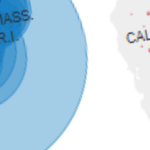PRF Late Reporting Extended
HRSA announces potential relief for health care providers that missed the deadline to report on their use of Provider Relief Funds
On April 7, 2022, the Health Resources and Services Administration (HRSA) posted a notice that offers providers that missed the deadline to report on their use of HHS Provider Relief Funds the opportunity to potentially be able to file that report and therefore avoid the potential recoupment of PRF funds. The “Request to Report Late” is limited to situations where the failure to timely submit the required report was due to one or more extenuating circumstances.
If you were notified that you failed to submit your required PRF Report on a timely basis and are being asked to return PRF funds, you should read this member advisory carefully.
Relevant Background
On March 27, 2020, President Trump signed into law the Coronavirus Aid, Relief, and Economic Security Act (CARES Act). As part of that Act, Congress allocated $100 billion (increased to $178 billion by subsequent legislation) to the creation of the CARES Act Provider Relief Fund (PRF) which was used to support hospitals and other healthcare providers on the front lines of the nation’s coronavirus response.
Under the terms of the PRF program, health care providers that received more than $10,000 in any reporting period were required to submit a report that provides details on how those funds were expended. The first report covered PRF payments received between April 10, 2020, and June 30, 2020, and was due on or before September 30, 2021. HHS subsequently enacted a 60-day grace period, which ran from October 1, 2021, through November 30, 2021. The second report covered PRF payments received July 1, 2020, and December 31, 2020, and was due on or before March 31, 2022.
Providers that failed to submit any required report by these deadlines are subject to the potential recoupment of those funds.
What HRSA Considers to be “Extenuating Circumstances”
According to the notice, health care providers will be permitted to request the opportunity to complete their report after the deadline to the extent the filing of their report was delayed due to one or more of the following:
- Severe illness or death – a severe medical condition or death of a provider or key staff member responsible for the reporting hindered the organization’s ability to complete the report during the relevant reporting period.
- Nature Disaster – a natural disaster occurred during or in close proximity to the end of the reporting period that damaged the organization’s records or information technology.
- Lack of receipt of reporting communications – an incorrect email or mailing address on file with HRSA prevented the organization from receiving instructions prior to the relevant reporting period deadline.
- Failure to click “Submit” – the organization registered and prepared a report in the PRF Reporting Portal but failed to take the final step to click “Submit” prior to the reporting deadline.
- Internal Miscommunication or error – internal miscommunication or error regarding the individual who was authorized and expected to submit the report on behalf of the organization and/or the registered point of contact in the PRF Reporting Portal.
- Incomplete Targeted Distribution payments – the organization’s parent entity completed all General Distribution payments, but a Targeted Distribution(s) was not reported on by the subsidiary.
Process for Applying for Permission to Submit a “Late Report”
To the extent one or more of the extenuating circumstances described above applies, the provider will be given the opportunity to submit a Request to Report Late Due to Extenuating Circumstances. The timeframe to submit these requests will run from April 11, 2022, to April 22, 2022.
HRSA is indicating that any provider that plans to submit such a request but has yet to register in the PRF Reporting Portal, should register prior to submitting their request.
To submit a request to file late, the provider will need to submit a form indicating the extenuating circumstance(s) that prevented the required report from being submitted in a timely fashion. That form will require the provider to provide a “clear and concise explanation” of the applicable extenuating circumstance. However, providers will not be required to submit any supporting documentation. The provider will be required to attest to the truthfulness and accuracy of their extenuating circumstance.
After submitting their request, the provider will be notified by HRSA whether their request is approved or denied. If the request is approved, the provider will have 10 days from the date of the notification to submit the required report through the PRF Reporting Portal.
If the request is denied, HRSA will proceed with the recoupment of the PRF funds subject to the missed report.













